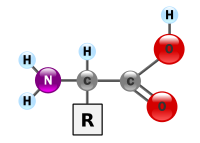
Association of energy and protein intakes with length of stay, readmission and mortality in hospitalised patients with chronic obstructive pulmonary disease
Sign Up to like & getrecommendations! Published in 2018 at "British Journal of Nutrition"
DOI: 10.1017/s0007114517003919
Abstract: Abstract Low energy and protein intakes have been associated with an increased risk of malnutrition in outpatients with chronic obstructive pulmonary disease (COPD). We aimed to assess the energy and protein intakes of hospitalised COPD… read more here.
Keywords: energy protein; chronic obstructive; protein intakes; energy ... See more keywords

Protein intakes and sources in diets of infants and young children aged 6–18 months in the United Kingdom
Sign Up to like & getrecommendations! Published in 2017 at "Proceedings of the Nutrition Society"
DOI: 10.1017/s0029665117003652
Abstract: Childhood obesity is of concern, with over a fifth of children in the UK starting school either overweight or obese. The early protein hypothesis suggests that excess protein intake in infancy is a risk factor… read more here.
Keywords: protein; infants young; protein intakes; intakes sources ... See more keywords

Examination of protein intakes at 2-years and weight status and body composition at 5-years in the Cork BASELINE Birth Cohort
Sign Up to like & getrecommendations! Published in 2020 at "Proceedings of the Nutrition Society"
DOI: 10.1017/s002966512000066x
Abstract: Abstract Dietary protein is critical for normal growth and development through its contribution of essential amino acids. In high-resource settings, protein intakes are generally adequate. Previous studies have suggested that higher protein intakes in infancy… read more here.
Keywords: protein intakes; mass index; mass; protein intake ... See more keywords

Protein Intake Greater than the RDA Differentially Influences Whole-Body Lean Mass Responses to Purposeful Catabolic and Anabolic Stressors: A Systematic Review and Meta-analysis.
Sign Up to like & getrecommendations! Published in 2019 at "Advances in nutrition"
DOI: 10.1093/advances/nmz106
Abstract: Under stressful conditions such as energy restriction (ER) and physical activity, the RDA for protein of 0.8 g · kg-1 · d-1 may no longer be an appropriate recommendation. Under catabolic or anabolic conditions, higher protein… read more here.
Keywords: protein intakes; mass; greater rda; lean mass ... See more keywords

Biofortified Maize Can Improve Quality Protein Intakes among Young Children in Southern Ethiopia
Sign Up to like & getrecommendations! Published in 2019 at "Nutrients"
DOI: 10.3390/nu11010192
Abstract: Quality protein maize (QPM) varieties are biofortified, or nutritionally improved, to have higher lysine and tryptophan levels to increase quality protein intakes particularly among young children. This study assesses adequacy of children’s protein intakes in… read more here.
Keywords: protein; quality; protein intakes; among young ... See more keywords

Low Protein Intakes and Poor Diet Quality Associate with Functional Limitations in US Adults with Diabetes: A 2005–2016 NHANES Analysis
Sign Up to like & getrecommendations! Published in 2021 at "Nutrients"
DOI: 10.3390/nu13082582
Abstract: Type 2 diabetes is associated with an increased risk for sarcopenia. Moreover, sarcopenia correlates with increased risk for falls, fractures, and mortality. This study aimed to explore relationships among nutrient intakes, diet quality, and functional… read more here.
Keywords: functional limitations; protein intakes; low protein; adults diabetes ... See more keywords

Adequacy of Nutritional Intakes during the Year after Critical Illness: An Observational Study in a Post-ICU Follow-Up Clinic
Sign Up to like & getrecommendations! Published in 2022 at "Nutrients"
DOI: 10.3390/nu14183797
Abstract: Whether nutritional intakes in critically ill survivors after hospital discharge are adequate is unknown. The aims of this observational study were to describe the energy and protein intakes in ICU survivors attending a follow-up clinic… read more here.
Keywords: day; follow clinic; post icu; energy ... See more keywords